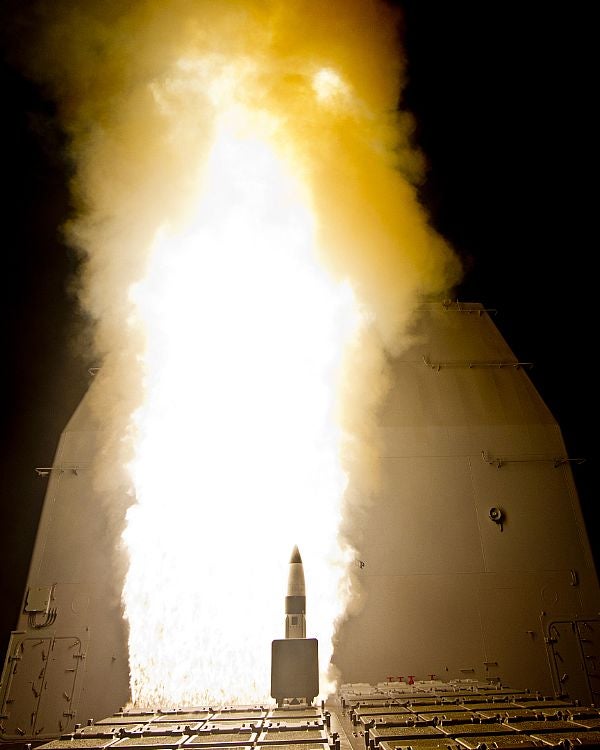
Aerojet Rocketdyne has successfully completed a fully integrated flight weight system hot fire test of its throttling divert and attitude control system (TDACS) in support of the Standard Missile-3 (SM-3) Block IIA programme.
During the trials conducted at the company’s facility in Sacramento, California, US, the TDACS unit was put through the altitude hot fire test to validate Aerojet’s throttling solid propulsion technology ability to scale up in size and operate in all expected environments.
The recent test marked the first of several altitude tests of SM-3 Block IIA TDACS development and qualification units.
Aerojet Rocketdyne Missile Defense and Strategic Systems business unit vice-president Michael Bright said that the SM-3 IIA TDACS has been developed by leveraging lessons learned from the design of the SM-3 IB TDACS.
"Because of the SM-3 IB experience, we have a more efficient design process and improved testing efficiency, and will be able to move into production faster," Bright said.
A cooperative development effort between US Department of Defense (DoD) and Japan Ministry of Defense (MoD), the SM-3 Block IIA missile is scheduled to be deployed in 2018 as part of MDA’s Aegis Ballistic Missile Defense System phased adaptive approach.
Raytheon Air and Missile Defense Systems product line vice-president Wes Kremer said: "The SM-3 IIA’s larger rocket motors will allow for a greater defended area, which is an important factor when it comes to protecting both the US and our Nato allies."
The SM-3 missile is capable of destroying targeting using hit-to-kill technology and strike threat ballistic missiles during the mid-course phase of an incoming missile outside of Earth’s atmosphere.
Work on the SM-3 Block IIA TDACS is being performed at the company’s facility in Sacramento, US, while the programme is being managed by the Missile Defense Agency (MDA) and Raytheon Missile Systems.
Image: A US Navy’s SM-3 Block 1B interceptor being launched from USS Lake Erie. Photo: courtesy of US Navy/Released.





